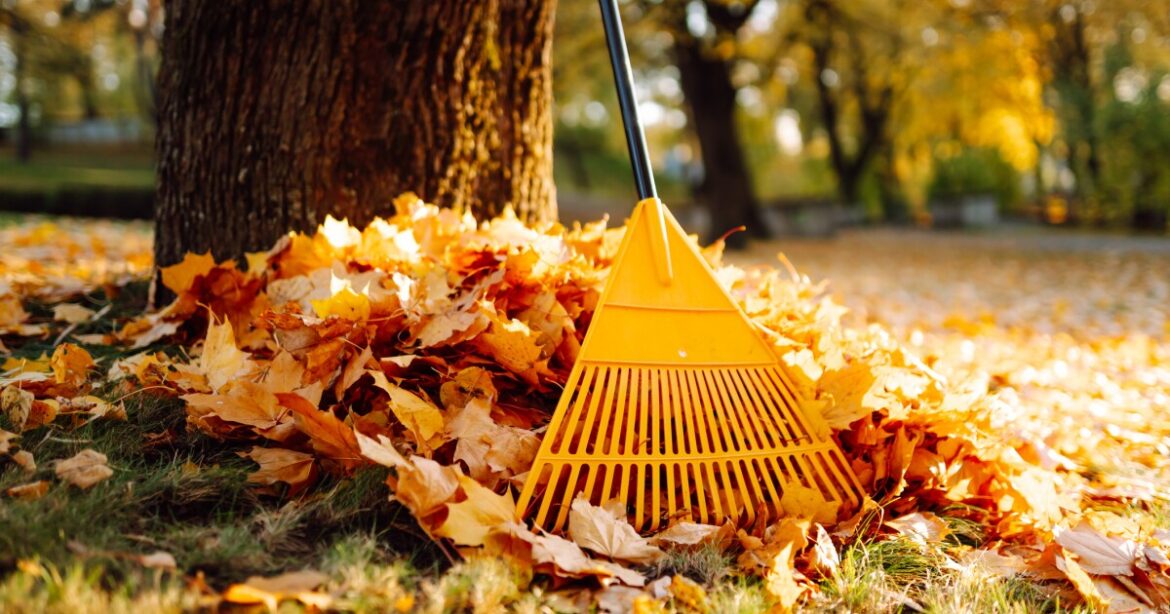It can be a heated debate — rake the leaves or not? For some, having a leaf-free yard in the fall is an aesthetic goal, while others like the natural look.
As you’re tackling several end-of-season garden chores, some recent research might sway you. It shows several benefits to leaving fallen leaves on your lawn and garden over the winter.
When you don’t rake or leaf-blow in the fall, this University of Maryland research shows how that affects the soil and the biological life in your yard, lawn and garden in a positive way.
To test the no-rake hypothesis, researchers chose several lawns and placed emergent traps over areas where one part of the lawn was raked, and the other part of the lawn was left covered with autumn leaves. They left them there and tested in the spring.
In the areas where leaves were left on the ground, 40% more butterfly and moth larvae and adults emerged in the spring. Spider populations also increased by 56% as well as 24% more beetles.
This research indicates that a lot of beneficial insects — aka the “good guys” that keep insects that harm your lawn and garden at bay — and biological life lies underneath the leaf layer. And beneficial insects and arthropods are using the leaves as an overwintering site.
These essential insects help pollinate plants, trees and shrubs and help them grow better by reducing the number of pest insects.
Plus, the Maryland researchers also delved into the carbon-capturing benefits when leaves are left to break down over the winter and into the soil.
Still, it’s a big ask to leave the rake and blower behind and embrace a leafy yard. Ease into it slowly with these methods!
How to ‘leave the leaves’As long as the leaf layer isn’t too thick, let the leaves drop on the lawn and walk away! Nature will do the rest and the leaves will decompose over the winter.
Shred up the leaves, and use them to protect overwintering, tender perennials, like lavender. Do this by putting a ring of chicken wire around the plants and put the shredded leaves inside.
Move leaves from the lawn to a leaf mold pile. That’s a pile that slowly rot down and turn to rich compost.
If you have a heavy layer of leaves, say from oak leaves which take longer to break down, relocate some of the leaves to places where you want to encourage that biological life, like a pollinator garden, or a perennial flower garden.
An important note: If you shred leaves up with a mower, it’s almost the same as removing the leaves altogether and doesn’t provide the habitat the essential insects need.
More leaves and what to do with them
Q: What’s the real deal with leaves? Leave them on the lawn? Leave them in garden beds? Blow them into garden beds? And if I leave them in the fall what do I do with them in the spring? I want to do what’s best for the insects and the plants. Please advise! Thank you! – Confused Gardener, via email
A: A heavier layer could kill the grass so remove any leaves that are more than a couple of inches thick, or if they are heavier oak leaves.
If it’s just a light layer of leaves, you won’t need to do much. By spring, they’ll have broken down.
Q: All of my rudbeckia and black-eyed Susans have mildew on them. I’m puzzled because you know we’ve had very little rain. I want to leave the flowers for the birds over the winter, but not sure if I should cut them? – Cindy, in Bennington
A: Powdery mildew is a ubiquitous fungal disease in the environment, and it flourishes when the conditions are right.
In the fall, when the nights are cool and the days are still a bit warm, powdery mildew starts forming.
Powdery mildew on rudbeckia is common but there are ways to help your plants.
You can just leave it as is — that way, the birds can still take advantage of the seed heads. And expect that, if conditions are right again next growing season, the mildew will return.
If powdery mildew has totally taken over your plants, chop down the plants and remove them from the area.
When and where to plant rhubarb
Q: I live in Burlington and I would like to plant rhubarb. I don’t know where to begin. Can you help me? – Laurence, in Burlington
A: This is a great time to connect with family and friends in the area who already have a rhubarb patch and would be willing to divide it and share some with you next spring.
Then, when spring hits the Burlington area (perhaps around April), and rhubarb begins popping out of the ground, your friend or neighbor can take a spade and divide off a couple of sections of the plant. Aim for a chunk that’s perhaps a foot wide in diameter.
Take that section to your house and move it to a raised bed with compost-amended soil and plant it there. You’ll have rhubarb forever!
All Things Gardening is powered by you, our audience! Send us your toughest conundrums and join the fun. Email your question to gardening@vermontpublic.org or better yet, leave a voicemail with your gardening question so we can use your voice on the air! Call Vermont Public at 1-800-639-2192.
Listen to All Things Gardening Friday evenings at 5:44 p.m., or Sunday mornings at 9:35 a.m., and subscribe to the podcast to listen any time.


Comments are closed.